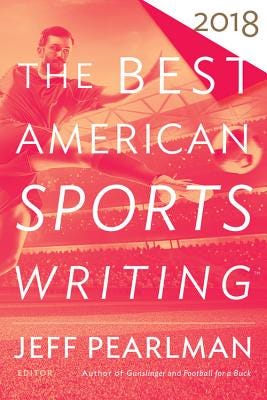Sports Biblio Digest 10.7.18: The Sports Times of Dave Anderson

News, Views and Reviews About Sports Books, History and Culture
Also In This Issue: John Carlos and Tommie Smith, 50 Years Later; Jim Brown; Best American Sports Writing; The ‘Best, Worst Game’ in Baseball History; Golf Digest’s Investigative Journalism; Lee Jenkins; Larry Fink’s Boxing Photography; Remembering Peter Bjarkman
* * * * * * * *
Only two men writing about sports have been awarded the Pulitzer Prize for commentary, and now they are both gone.
Dave Anderson, who was 89 when he died this week in a New Jersey assisted-living facility, was the first, in 1981, at a time when American sports were increasingly coming into greater public and media scrutiny.
It was the time of greater television exposure and bigger salaries, and the raging egos and conflicts that went with them.
In his hometown of New York City, those egos and conflicts were writ large, as his coverage of George Steinbrenner and the New York Yankees demonstrated.
However, the longtime columnist for The New York Times, despite his clear-eyed perspective on sports, never succumbed to the abject cynicism of many of his peers (as might fit the bill to some degree of his fellow Pulitzer winner, Jim Murray, who was honored in 1990.)
The columns for which the Pulitzer committee commended Anderson were written as snapshots of a time, but have lasted as enduring testaments of a changing sensibility, ethos and public understanding of American sports:
“The Food On a Table At the Execution” described Steinbrenner’s ruthless, devious dismissal of manager Dick Howser. “Muhammad Ali: Death of a Salesman” detailed the legend’s loss to Larry Holmes and his perch as popular champion.
Another sad tale explained the tragic demise of Kansas City Chiefs star Jim Tyrer. Golf, Anderson’s abiding passion as well as subject for some of his best prose, and Jack Nicklaus in particular, came in for rousing treatment in “Jack is Back, Jack is Back.”
As George Vecsey, his fellow Times columnist, remembered this week, Anderson was just a “a happy and charming lot.”
He was a newspaper lifer, starting out as a messenger boy at the New York Sun, with stints covering the Brooklyn Dodgers for Brooklyn Eagle and the New York Journal-American. He moved to the Times in 1968, and his “Sports of the Times” column ran for most of his 39-year tenure there.
“My heroes were sportswriters: Frank Graham, Jimmy Cannon, Red Smith, Arthur Daley, W. C. Heinz,” Anderson once said, and he embodied the best of their examples.
But unlike earlier generations of sports observers, there was a growing obligation in his profession to look deeper into the games, beyond what was laid out before them on the fields, courts, rings and links.
Sportswriting, Anderson believed, was “part of American culture, just as much as music, art or anything else,” and he treated it with importance, but not today’s politicized, overreaching gravitas. He wrote about people in sports, and what made them human. They were character studies, not abstractions for an agenda.
Along the way were many books, as-told-tos and other volumes that helped Anderson not only make a living, but tell the stories of popular figures in increasingly public demand.
Anderson was popular in the press boxes without drawing attention to himself. As Thomas Boswell wrote in The Washington Post:
“He represented every normal person who ever became a sportswriter but didn’t think he or she was the next colorful rich-and-famous off-to-Broadway Ring Lardner or Damon Runyan.
“Dave’s gracious personality — his warmth and concern for others, his help for young journalists, the way he improved the mood of any room — is going to get a lot of attention. But don’t forget that he was extremely talented, tough when he needed to be and on top of every subject he covered.
“Nobody in sportswriting deserves to be appreciated more than Dave. That he never asked for high regard but simply earned it is just another reason.”
The Times has rounded up some of Anderson's memorable columns here.
A Few Good Reads
A Golf Digest story about a prisoner who drew golf courses as a way to pass time turned into a full-blown investigation that ended up getting him freed for a wrongful conviction. Valentino Dixon had never seen, much less walked, a golf course in his life until he was sent to the notorious Attica penitentiary in upstate New York on a murder charge that was overturned, after 27 very long years;

It’s been 50 years since John Carlos and Tommie Smith turned the Mexico City Olympics upside down with their Black Power protest on the medal stand that got them sent home by IOC boss Avery Brundage. In “Fists of Fury,” published at Sports Illustrated this week, Tim Layden revisits the episode and assesses its legacy, and finds his interview subjects not exactly easy to deal with;
Another notable name is leaving SI: Lee Jenkins, who’s accepted a front-office job with the Los Angeles Clippers;
Game 5 of the 2017 World Series has been called “a night of perilous exhaustion, misguided heroism and franchise-altering implications” after the Los Angeles Dodgers gave up a lead that helped the Houston Astros claim their first crown. Former Dodgers coach Alex Cora, now the manager of the powerhouse Boston Red Sox, simply called it “the best, worst game in the history of the game;”
More from the LA Times, this about Southern Cal’s win over Texas in 1956 in a landmark college football game that hasn’t gotten its due;
Provocative radio host Clay Travis has a new book out about politics and sports, “Republicans Buy Sneakers, Too,” which triggered the increasingly-woke The New Yorker to take a few shots;
So long to the Bergino Baseball Clubhouse, a Greenwich Village shop which featured author and related events but suffered from a lack of foot traffic. In mourning, prolific baseball author Ron Kaplan paid tribute to it as “an oasis of culture on a sweat-filled landscape.”
On Display
A collection of acclaimed photographer Larry Fink’s finest black and white boxing work is being featured through the end of the year at the Philadelphia Museum of Art, capturing everyday sparring as well as the superstars of the sport. Many of the photos were taken at the Blue Horizon, one of Philly’s landmark boxing arenas, which closed in 2010.
On Oct. 20, Fink will appear at the museum with Damion Thomas, curator of sports at the National Museum of African American History and Culture, for a conversation about boxing culture and representations of the sport.
Boxing historian Burt Sugar wrote the text accompaniment to Fink’s 1997 book, “Boxing,” which includes more than 50 duotone photos.
Fink, 77, has previously had exhibitions of his work (boxing, The Beats, Andy Warhol in particular) at the Musuem of Modern Art, the Whitney Museum, and in Europe. Honored with a Guggenheim Fellowship and by the National Endowment of the Arts, he’s taught at Cooper Union, Yale and Bard College.
Sports Book News
The 2018 edition of “Best American Sports Writing” was published this week, with Jeff Pearlman as the guest editor, and Lee Jenkins is included in this volume, specifically his story about enigmatic NBA rising star Jimmy Butler.

Also in this year’s collection: Tom Junod on Muhammad Ali, Wright Thompson on Pat Riley, Howard Bryant on Venus and Serena Williams, Dave Kindred on Lefty Driesell, as well as stories by Sally Jenkins, John Branch, Steve Rushin, Kent Babb and Chris Ballard.
In The New York Review of Books, which rarely wanders into sporting terrain, literary critic extraordinaire James Wolcott reviews “Last Man Standing,” a new Jim Brown biography that, given author Dave Zirin’s political proclivities, is more about the NFL legend’s activism.
More with Zirin on NPR and why he chose to write about Brown now, especially in the wake of his embrace of Donald Trump. Readers here know I’m no fan of Zirin, but I found this perspective interesting, on Brown (who’s of the pre-1968 black generation) saying that if he were an NFL general manager today, he wouldn’t sign Colin Kaepernick:
“He's always had this strain of conservatism in his politics that black people do not achieve advancement through the politics of protest, but through the politics of earning as much money as possible, and trying to get out of the capitalist system whatever they can for the purposes of building economic self-sufficiency. And protest is an impediment to that in the mind of Jim Brown. And those have always been his politics.”
Passings
Peter Bjarkman, 77, one of the foremost experts about Latin American baseball and the Cuban game in particular, wrote several books about an all-consuming passion.
His work earned him the Henry Chadwick Award, issued by the Society for American Baseball Research. Most recently, Bjarkman wrote about his time watching baseball with Anthony Bourdain, the food show host who recently committed suicide.
Here’s official baseball historian John Thorn’s tribute to Bjarkman, the author of around 40 books on sports history and who was a college professor before embarking on his Latin baseball travels and writings in the late 1990s.
More from Thorn, quoted in SABR’s obituary:
"A siren song pulled Peter away from academia to baseball and a second, improbable career — that of baseball historian and writer for hire. Retiring from linguistics and its constant comparisons between cultures, he brought that unique perspective to baseball. In America everyone fancies himself a baseball expert; perhaps in Cuba too. But no American has joined the past, present, and future of each nation’s view of the game as Bjarkman has."
Here’s more on Bjarkman’s bibliography from SABR.
* * * * * * * *
The Sports Biblio Digest is an e-mail newsletter delivered each Sunday. You can subscribe here and search the archives.
This is Digest issue No. 138, published Oct. 7, 2018.
I’d love to hear what you think about the Digest, and Sports Biblio. Send feedback, suggestions, book recommendations, review copies, newsletter items and interview requests to Wendy Parker at sportsbiblio@gmail.com.
You can also follow Sports Biblio on Twitter and hit the “like” button on Facebook.


